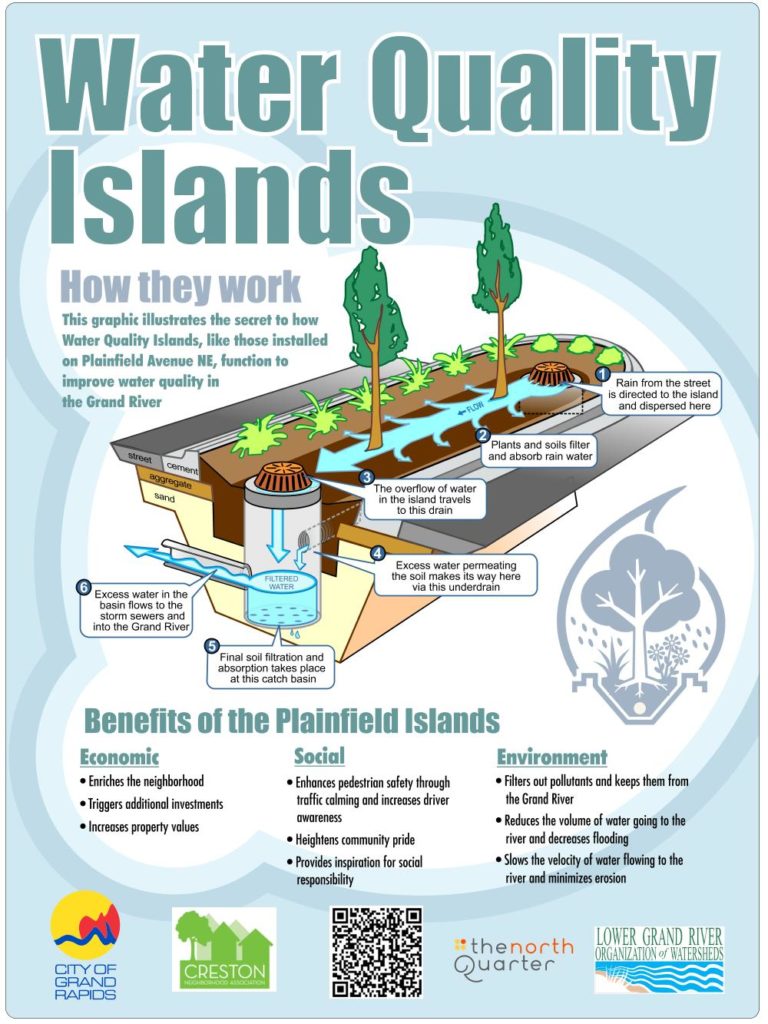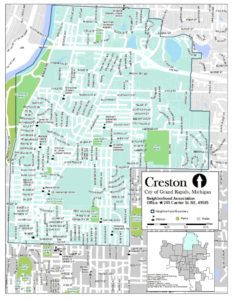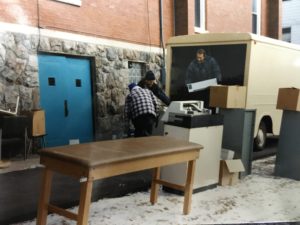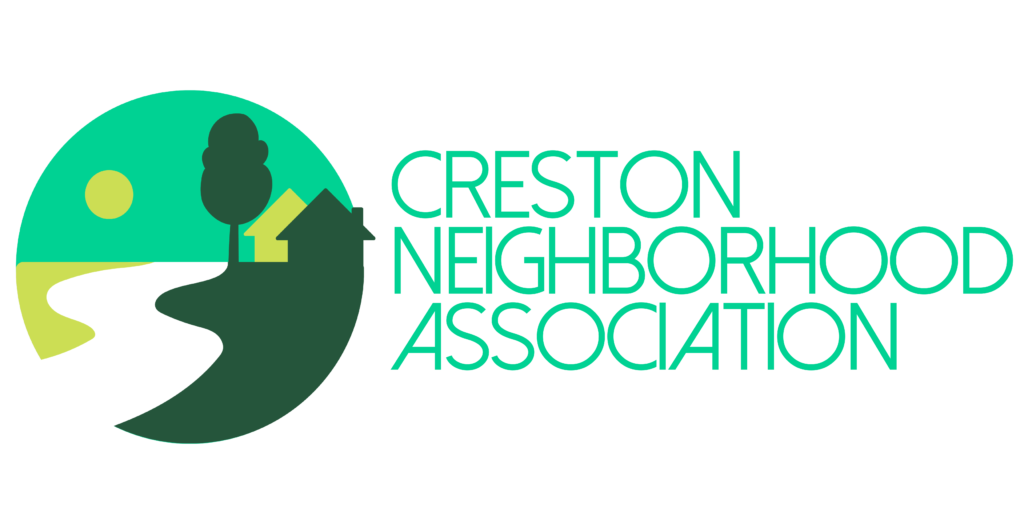Underground Infrastructure Makes Creston Friendlier, More Sustainable, Greener
By Gabe Savercool
At times, the work of Creston neighbors through CNA’s community organizing may go unobserved by the public. But these underground efforts to improve the neighborhood can be just as important as the other, more noticeable projects. One such project is the creation of seven bioretention islands on Plainfield Avenue between Leonard and Ann Streets, which now provide an enormous impact on our environment and the look and feel of our neighborhood.
These bioretention islands provide a significant benefit to the environment by filtering and treating stormwater and thus reducing pollution of our waterways. The islands remove road salts, waste, and debris from the water, decreasing the burden on water filtration plants and cleaning the water before it goes into the Grand River and Lake Michigan.
Together, the seven islands can filter 90,000 gallons of water for every inch of stormwater collected. Here’s how it works: The islands collect stormwater runoff via street curb drains into special basins underground. That water is then funnelled to the ends of the islands by sump pumps and distributed into the island’s soil. The soil underneath the islands is a special blend, including small pebbles and sand, that helps retain and filter water. The roots of the plants growing in the islands, resistant to salt and pollutants, also help to clean the water. Above ground, these plants help filter the air and reduce the urban heat caused by asphalt roads. Finally, the remaining cleaned water is then siphoned to the sewer drains.

The islands also enhance Creston as a walkable, business-friendly neighborhood. The street design of the islands narrowed the street and added bike lanes, which slowed down traffic for pedestrians and made it safer to shop and travel. The islands make Creston greener, increasing desirability and property values, and spruce up the Plainfield business district with natural beauty.
At its heart, this was a Creston project dreamed up by local leaders and funded by local businesses. In 2010, 2nd Ward commissioner Ruth Kelly and local business owner Deck Andrejczak met with city staff and learned that city engineer Breese Stam had designed a boulevard that would use bioretention islands to filter stormwater while also making streets more beautiful and walkable. Partnering with CNA, these local leaders decided to work towards creating seven bioretention islands along Plainfield. Unfortunately, the city had little money to support this project. If the Creston neighborhood wanted the islands, they would have to fund it themselves.
After raising $90,000 from local businesses, $10,000 from the Frey Foundation, and $5000 from Meijer, Creston neighbors were close to reaching their goal. The Dyer Ives Foundation agreed to pay for the final island, costing about $75,000. This final donation helped to leverage a $150,000 grant from the Michigan Department of Transportation (MDOT). With funding in hand, construction for the islands finally began in June of 2012.
The Plainfield Avenue bioretention islands are the first water quality islands in Michigan and serve both as a pilot project for future MDOT projects and as a model for bioretention islands nationwide. Unfortunately, funding has not yet been secured for the ongoing maintenance of these islands, potentially limiting their effectiveness.
Nonetheless, we can be proud of the hard work and vision that went into bringing these bioretention islands into our community. Next time you hear a thunderstorm, think about the seven mini-water-filtration-plants on Plainfield Avenue and the generous Creston neighbors that helped fund them.





